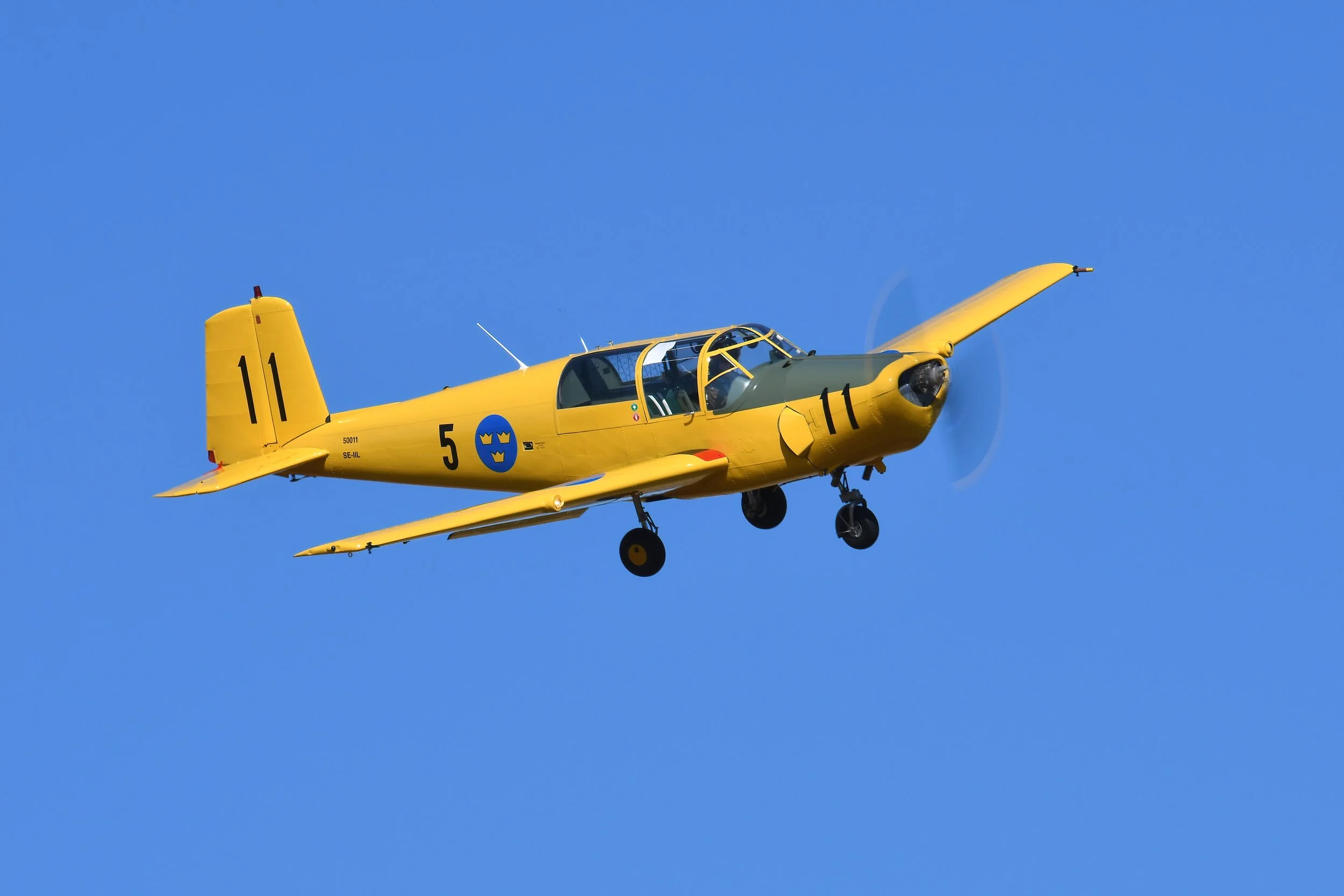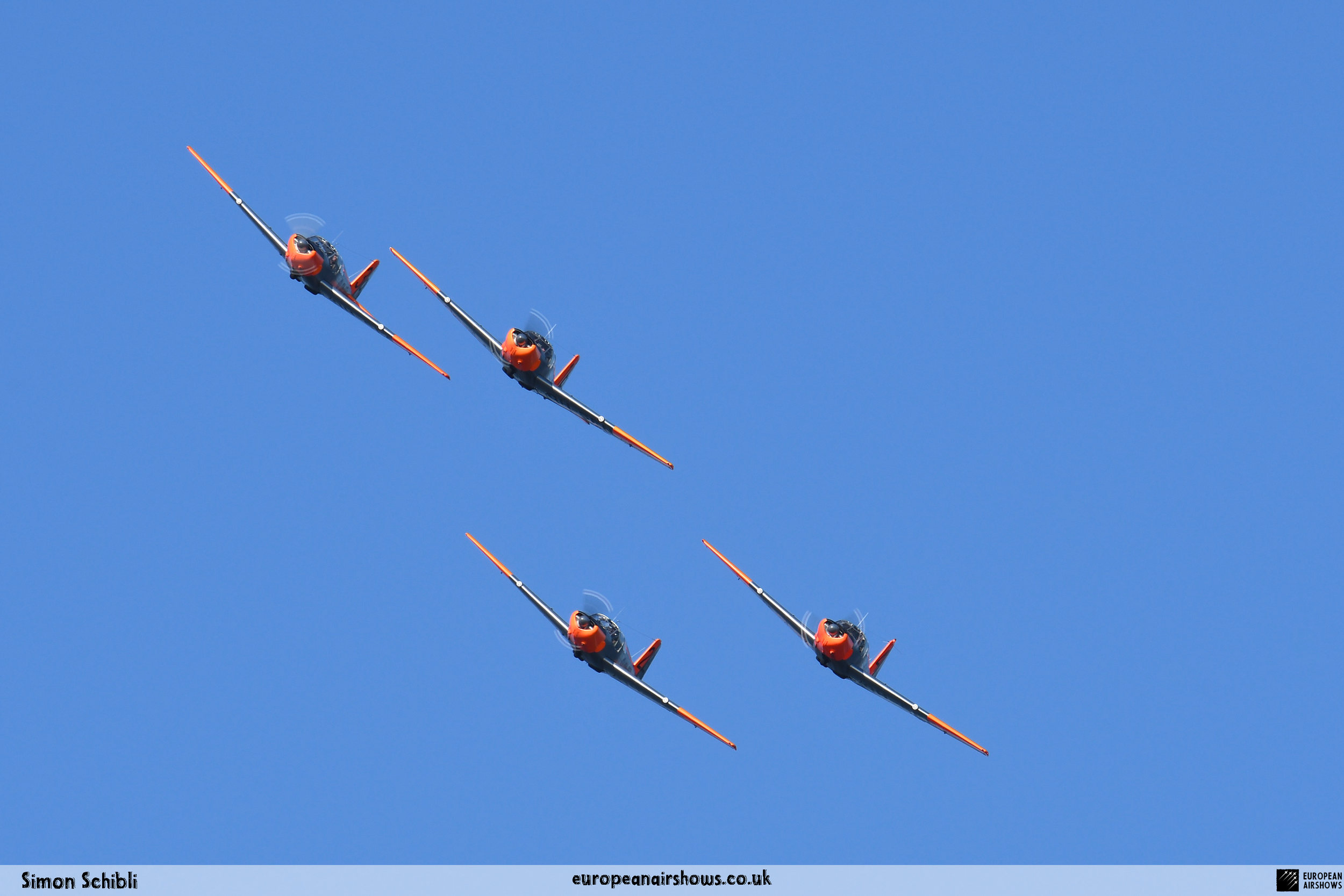
November 20 / Saab 91 Safir first flight
First Flight 20 November 1945
Saab 91 Safir
The Saab 91 Safir, aptly named after the precious gemstone sapphire, is a versatile single-engine trainer aircraft with a rich history of development and operational use. This aircraft was designed to accommodate either three or four passengers, depending on the variant. The inception of the Safir dates back to 1944, a period marked by the anticipation of reduced military aircraft orders following the conclusion of the Second World War. Saab AB, a prominent Swedish aerospace company, embarked on the development of the Safir as part of a broader strategy that included the creation of the Type 90 Scandia airliner and the Saab 92 motor car.
The design of the Safir was spearheaded by Anders J. Andersson, an accomplished engineer who had previously contributed to the design of the Bücker Bü 181 “Bestmann” at Bücker. The Safir’s design drew inspiration from the Bestmann, sharing several conceptual features. Unlike its wooden predecessor, the Safir was primarily constructed from metal, although it retained fabric-covered control surfaces. The development of the aircraft faced delays due to the prioritization of urgent military projects and industrial actions affecting suppliers. Despite these challenges, the Safir took to the skies for the first time on November 20, 1945.
Initially, the prototype was equipped with a 130 hp de Havilland Gipsy Major IC piston engine. However, the first production model, the Saab 91A, was powered by a slightly more robust 145 hp Gipsy Major 10 engine. Military customers, however, found this engine underpowered, prompting Saab to replace it with a six-cylinder Lycoming O-435A engine, rated at 190 hp. This re-engined version became known as the Saab 91B and first flew on January 18, 1949. Subsequent variants included the Saab 91C, which retained the O-435 engine but featured a redesigned four-seat cabin, and the Saab 91D, which introduced a lighter four-cylinder Lycoming O-360-A1A engine rated at 180 hp.
Beyond its primary role as a trainer and touring aircraft, the Safir also served as an aerodynamic testbed. The first prototype was utilized for low-speed testing of the swept wing design for the Saab 29 jet fighter. It was later modified further to test the wing for the Saab 32 Lansen fighter. Additionally, an ex-Swedish Safir was sold to Japan, where it underwent various modifications to test high-lift devices for the Shin Meiwa PS-1 flying boat.
Production of the Saab 91A commenced in 1946, but sales were initially sluggish due to the availability of inexpensive ex-military trainers following World War II. The Swedish and Ethiopian Air Forces were among the major users of the 91A. In 1951, Sweden placed an order for 74 91B trainers to replace its remaining Bestmanns. However, due to Saab’s focus on producing J29 Tunnan fighters, the production of the 91B was outsourced to the Dutch company De Schelde, which manufactured these aircraft at their Dordrecht facility until 1955.
Saab resumed production of the Safir at its Linköping factory in 1954, producing 25 Saab 91B-2s for Norway, 30 Saab 91Cs for military customers, and 99 Saab 91Ds. The production of the Safir continued until 1966, with the final aircraft, a Saab 91C, being delivered to Ethiopia. In total, 323 Safirs were built, including the prototype.
The Safir found its place in the air forces of Sweden, Norway, Finland, Austria, Tunisia, and Ethiopia, serving primarily as a trainer aircraft. A single aircraft was also used by the Japan Defense Agency as a STOL test platform. The type remained in service with the Norwegian and Finnish air forces until the late 1980s and in Austria until 1992. Although it was replaced as a trainer by the Scottish Aviation Bulldog in Sweden in 1971, the Safir continued to serve as a liaison aircraft, remaining in service until 1994.
Major civilian operators of the Safir included Air France, Lufthansa, and the Dutch Rijksluchtvaartschool, which utilized the aircraft at Groningen Airport Eelde. During the development of the Saab 29, the initial Saab 91 prototype was modified with a scaled-down version of the Saab 29’s swept wings, earning it the designation Saab 201 Experimental Aircraft. This same airframe was later fitted with wings designed for the Saab 32 Lansen, becoming the Saab 202. Additionally, a single Saab 91 Safir was modified as the Saab X1G for research purposes in Japan, highlighting the aircraft’s adaptability and significance in aviation history.
Saab 91 Safir Facts
Design Origins: The Saab 91 Safir was designed by Anders J. Andersson, who previously worked on the Bücker Bü 181 “Bestmann,” influencing the Safir’s design with similar conceptual features.
First Flight: The Safir made its maiden flight on November 20, 1945, marking the beginning of its journey as a versatile trainer aircraft.
Engine Variants: The initial production model, the Saab 91A, was powered by a 145 hp de Havilland Gipsy Major 10 engine, but later variants like the 91B used a more powerful 190 hp Lycoming O-435A engine.
Production Locations: While Saab AB in Linköping, Sweden, built 203 Safirs, an additional 120 were produced by De Schelde in Dordrecht, Netherlands, due to high demand and Saab’s focus on other projects.
Aerodynamic Testbed: The Safir was used as a testbed for aerodynamic research, including testing swept wing designs for the Saab 29 jet fighter and the Saab 32 Lansen.
Military Use: The aircraft served as a trainer for various air forces, including Sweden, Norway, Finland, Austria, Tunisia, and Ethiopia, demonstrating its widespread military application.
Civilian Operators: Major civilian users of the Safir included Air France, Lufthansa, and the Dutch Rijksluchtvaartschool, showcasing its versatility beyond military use.
Total Production: A total of 323 Saab 91 Safirs were produced, including the prototype, with production running from 1946 to 1966.
Longevity in Service: The Safir remained in operational use for several decades, with the Norwegian and Finnish air forces using it until the late 1980s and Austria until 1992.
Japanese Research: A single Saab 91 Safir was modified as the Saab X1G for research in Japan, where it was used to test high-lift devices for the Shin Meiwa PS-1 flying boat, highlighting its adaptability for experimental purposes.



